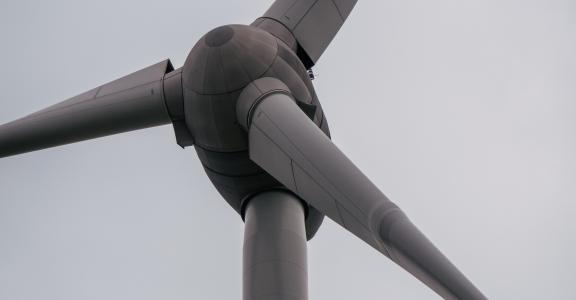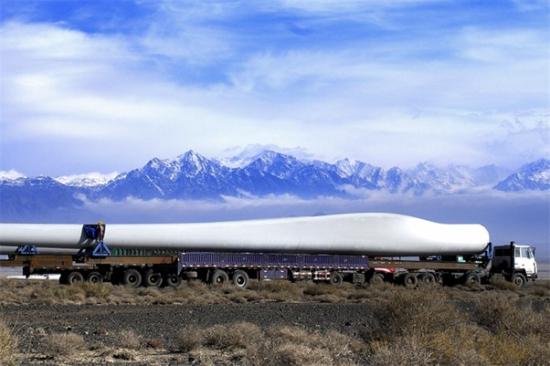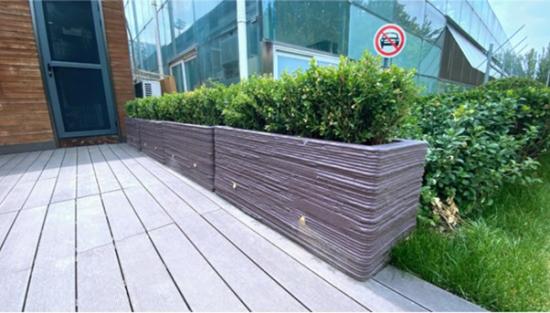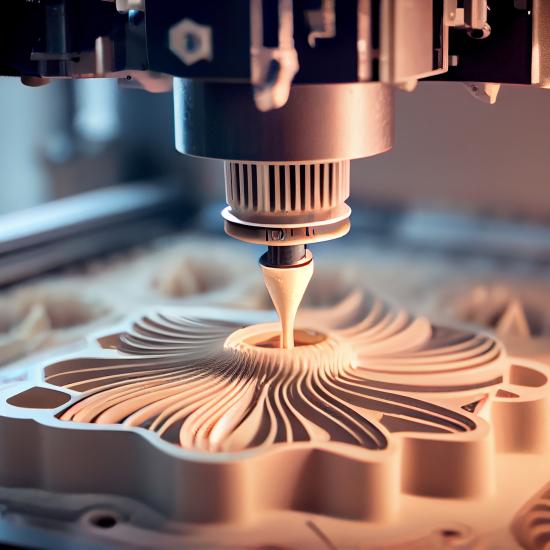There has been an important breakthrough in the recycling of waste from old wind turbine blades. It appears that a Chinese company has found how to reprocess the waste into high-quality 3D-printed material that can be used in new construction projects.
Chinese turbine manufacturer Goldwind has developed a process in which scrapped wind turbine blades are ground up to make a product that can be processed into raw materials for 3D-printed construction products. These materials then have similar mechanical properties, durability and operational performance to concrete. The researchers achieved the quality they needed by continuously adjusting the ratios of raw materials and the particle size distribution of the ground blades until they achieved the strength required for printed construction products.
The need for local building products
Because Chinese wind farms are spread across the country - and are usually in very remote areas - the cost of recycling materials from old turbine parts is largely the cost of taking them to where they are needed. An advantage of 3D printing with solid waste is that it is possible to use the technology locally and to integrate it into other construction projects around the wind farms.
With the help of mobile 3D printing robots, the waste can be used for local production and processing, which cuts transport costs by eliminating the need to move large quantities of waste over long distances.
Transporting recyclable materials drives up recycling costs because of the long distances involved (Source: Goldwind).
Finding the 'Golden Ratio'
In 3D printing, the designers feed digital design models into 3D printers and convert them into printing instructions. The printer then follows the instructions and processes layers of material into parts with the desired shapes. The technological challenge in adding ground particles of turbine blades to the printing materials lies in using the maximum amount of waste from the blades while guaranteeing the specific strength for the printed product.
During the experiments with 3D printing based on turbine blade waste, the Goldwind researchers repeated a number of experiments and tests, constantly adjusting the ratios of the raw materials and the size distribution of the crushed particles. This resulted in a 'golden ratio' that met the strength requirements of the printed products and could be used for a series of material systems suitable for 3D printing.
The mechanical properties, durability and operational performance of the finished products made with this new printed material match those of traditional concrete.
To demonstrate the feasibility of the technology, flower boxes were 3D printed using recycled waste from a wind farm in Mongolia. This was done using 3D printing robots. The construction method is smart, environmentally friendly and efficient when compared to traditional construction technologies as it is safer for the personnel and the labour cost is low, especially for making structures with unique shapes.
The bigger picture
The process would make it possible to recycle 30 percent of wind turbine blade waste, which could help deal with the problem of what to do with scrapped turbine blades. It is estimated that China will have to deal with 5,800 tonnes of composite waste by 2025, rising to 74,000 tonnes by 2028.
By developing this technology, Goldwind aims to reposition itself from a producer of turbine blade waste to a supplier of raw materials for 3D printing based on solid waste. The OEM aims to make its turbines 100 percent recyclable by 2040. The ultimate goal is to create a complete industrial chain for solid waste from turbine blades, characterised by local recycling, local grinding of materials, material screening, and 3D printing of the material into manufactured goods.
The company is one of several turbine manufacturers worldwide to set such goals, alongside players such as Vestas, Siemens Gamesa and LM Wind Power (owned by GE).
It’s not only companies that are taking up this challenge: research centres, including Sirris, are also looking into the recycling potential of wind turbine blades. Our experts have already studied this matter as part of the CompositeLoop project and a number of projects are currently underway that deal with the recycling of wind turbine blades. The focus here, however, is on casting and pressing processes rather than 3D printing. Are you interested in the recycling potential of composite materials? Then be sure to get in touch with us!







